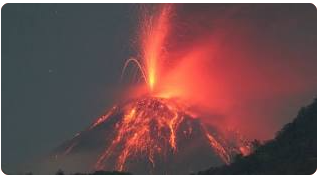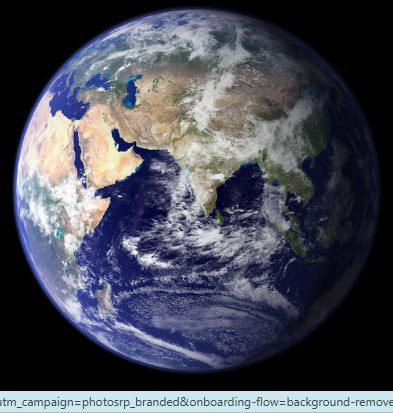Dodging Disaster: How Earth Avoided a Direct Hit from a Solar Storm

On April 1, 2025, Earth came alarmingly close to being hit by a massive solar storm, as an eruption from the Sun, known as a solar flare, released intense radiation. The flare came from an active sunspot region, AR4046, which unleashed a significant burst of solar energy. Though Earth narrowly avoided a direct hit, this near-miss serves as a stark reminder of the volatile forces at play in our solar system, and the potential consequences of future solar storms.
What Happened During the Solar Event?
Solar flares are powerful bursts of radiation from the Sun, which are often accompanied by coronal mass ejections (CMEs). These flares can release enormous amounts of energy into space, and when directed toward Earth, they can interact with our planet’s magnetic field, causing geomagnetic storms. These storms have the potential to disrupt communication systems, satellites, and even power grids on Earth.
In this case, the Sun unleashed an M5.6-class solar flare from the sunspot region AR4046. Fortunately, the trajectory of the flare’s associated CME did not directly target Earth, causing the bulk of the energy to miss our planet. However, there was a brief period of radio blackout over certain regions, particularly on the sunlit side of Earth, which is common when solar flares reach a certain magnitude. Despite the brief disruptions, the event was far less intense than it could have been.
Why Does This Matter?
While the flare didn’t lead to widespread disruption this time, the potential risks of solar storms are significant. The Earth’s technological infrastructure, heavily reliant on satellites, GPS systems, and communication networks, is vulnerable to these solar events. A direct hit from a strong solar storm could result in:
-
Communication Blackouts: Solar storms can disrupt high-frequency radio signals and GPS systems, which rely on satellite networks. This could affect everything from airline communications to maritime navigation.
-
Power Grid Failures: One of the most serious threats from a solar storm is the potential for damage to power grids. A large CME can induce electric currents in power lines, potentially damaging transformers and causing widespread blackouts. The 1989 solar storm, for example, caused a 9-hour blackout in Quebec, Canada.
-
Satellite Damage: Satellites in orbit are at risk from solar storms. Radiation from these events can damage satellite electronics, leading to loss of service or even the destruction of the satellite.
-
Increased Risk to Astronauts: Solar flares also pose a significant risk to astronauts in space, as they could be exposed to dangerous radiation levels. This is a key concern for future deep-space missions, including those targeting Mars.
The Increasing Threat of Solar Activity
The near-miss with the solar storm is part of a broader trend as the Sun enters the peak phase of its 11-year solar cycle, known as Solar Cycle 25. This cycle, which began in December 2019, is expected to reach its maximum around mid-2025, marking a period of heightened solar activity.
During this peak, the frequency of solar flares and CMEs increases, leading to a greater risk of solar storms that could impact Earth. As scientists continue to monitor the Sun’s behavior, it is clear that more solar events are likely in the coming years, making the need for space weather forecasting and mitigation strategies more urgent than ever.
How Are We Preparing for Future Solar Storms?
The close call with the solar flare on April 1, 2025, has spurred further discussions about how vulnerable Earth is to these kinds of space weather events. To better prepare for future solar storms, space agencies and organizations around the world are investing in advanced technology and monitoring systems.
One of the most promising advancements in space weather forecasting is NASA’s Space Weather Follow On-Lagrange 1 (SWFO-L1) mission, scheduled to launch in September 2025. The mission will place a satellite at the Lagrange point 1, a stable point between the Earth and Sun, where it will be able to monitor solar wind and CMEs in real-time. By providing early warnings of solar storms, the SWFO-L1 mission will enable better preparedness and response strategies, including mitigating potential damage to power grids and communication systems.
Moreover, ongoing efforts to harden satellite systems, improve power grid resilience, and increase our understanding of solar dynamics are crucial in reducing the impact of future solar storms.
Looking to the Future
While Earth dodged a bullet this time, the threat of solar storms is far from over. As the Sun reaches its peak in Solar Cycle 25, scientists and engineers are bracing for more solar events, some of which could be far more intense than the April 2025 near-miss. The increased solar activity could lead to heightened risks to technological infrastructure, but with better preparedness, we can minimize the damage.
Ultimately, our increasing reliance on space-based technologies makes it imperative for governments, scientists, and industries to continue improving monitoring systems and response strategies. The near-miss serves as a wake-up call, reminding us that while space weather may seem distant and abstract, its effects can be deeply felt on Earth.
In the coming years, our ability to forecast and respond to solar storms will be crucial in protecting not only our technologies but our way of life, ensuring that we remain resilient in the face of the unpredictable forces of nature.











